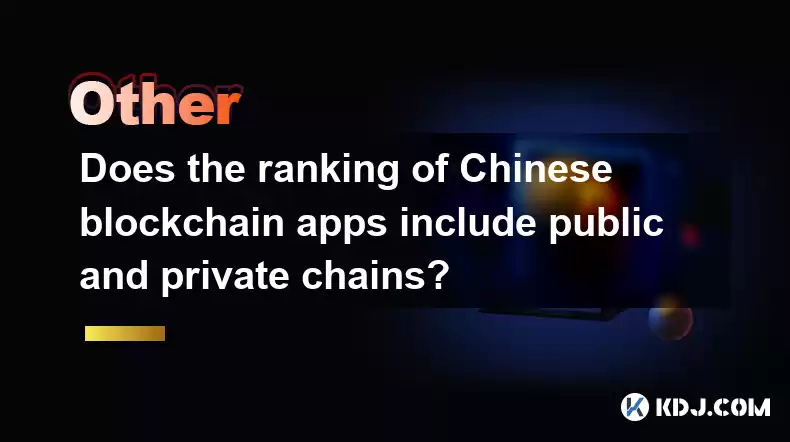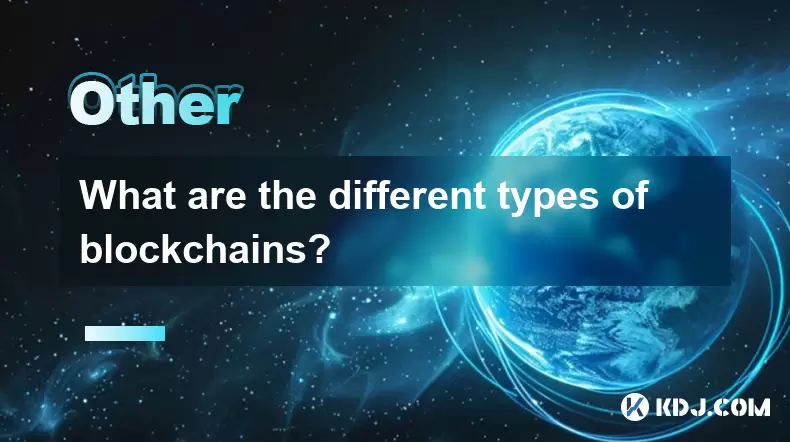-
 Bitcoin
Bitcoin $112400
-1.07% -
 Ethereum
Ethereum $3409
-3.27% -
 XRP
XRP $2.784
-6.60% -
 Tether USDt
Tether USDt $0.9997
-0.03% -
 BNB
BNB $739.3
-2.09% -
 Solana
Solana $158.0
-2.90% -
 USDC
USDC $0.9998
-0.02% -
 TRON
TRON $0.3213
-0.94% -
 Dogecoin
Dogecoin $0.1929
-5.01% -
 Cardano
Cardano $0.6974
-2.82% -
 Hyperliquid
Hyperliquid $36.69
-2.31% -
 Sui
Sui $3.327
-4.80% -
 Stellar
Stellar $0.3672
-5.18% -
 Chainlink
Chainlink $15.65
-3.07% -
 Bitcoin Cash
Bitcoin Cash $525.0
-1.68% -
 Hedera
Hedera $0.2291
-6.00% -
 Avalanche
Avalanche $20.91
-2.96% -
 Ethena USDe
Ethena USDe $1.000
0.00% -
 Toncoin
Toncoin $3.520
-1.12% -
 UNUS SED LEO
UNUS SED LEO $8.968
0.14% -
 Litecoin
Litecoin $105.7
0.26% -
 Shiba Inu
Shiba Inu $0.00001181
-1.79% -
 Polkadot
Polkadot $3.492
-2.08% -
 Uniswap
Uniswap $8.800
-3.10% -
 Dai
Dai $0.9999
-0.01% -
 Monero
Monero $289.9
-3.17% -
 Bitget Token
Bitget Token $4.243
-1.27% -
 Pepe
Pepe $0.00001006
-3.67% -
 Cronos
Cronos $0.1248
-5.68% -
 Aave
Aave $249.7
-2.50%
Does the ranking of Chinese blockchain apps include public and private chains?
Chinese blockchain app rankings consider public and private chains, focusing on adoption, technology, ecosystem support, and regulatory compliance within the Chinese market.
Apr 22, 2025 at 01:43 am

The ranking of Chinese blockchain apps often encompasses a broad spectrum of blockchain technologies, including both public and private chains. Understanding the distinction between these two types of chains is crucial for comprehending how they are evaluated and ranked. Public chains are open to everyone and are typically decentralized, whereas private chains are restricted to a specific group and are more centralized. This article will delve into how these different types of chains are included in rankings, what criteria are used, and how they are assessed within the Chinese market.
Criteria for Ranking Blockchain Apps
When it comes to ranking blockchain apps in China, several key criteria are typically considered. The first criterion is the level of adoption, which includes the number of users and the frequency of transactions on the platform. The second criterion is the technological robustness of the blockchain, which involves factors such as scalability, security, and speed. The third criterion is the ecosystem support, which looks at the availability of tools, developers, and other resources that enhance the functionality of the blockchain. Lastly, the regulatory compliance is crucial, especially in a market like China where regulations can significantly impact the viability of a blockchain app.
Inclusion of Public Chains in Rankings
Public chains, such as Ethereum and Bitcoin, are often included in the rankings of Chinese blockchain apps due to their widespread adoption and influence on the global blockchain ecosystem. In China, public chains are evaluated based on their performance within the local market. This includes the number of Chinese users, the volume of transactions conducted in China, and the level of integration with Chinese businesses and services. For instance, a public chain like Ethereum might be ranked highly due to its use in various decentralized finance (DeFi) applications that have gained popularity among Chinese investors.
Inclusion of Private Chains in Rankings
Private chains, on the other hand, are often developed and used by enterprises for specific business purposes. In the Chinese context, private chains are ranked based on their ability to solve real-world business problems. This includes their integration with existing enterprise systems, their ability to enhance efficiency, and their compliance with Chinese data protection and privacy laws. For example, a private chain developed by a Chinese tech giant for supply chain management might be ranked highly if it demonstrates significant improvements in logistics and inventory management.
Evaluation Methods for Public and Private Chains
The methods used to evaluate public and private chains can differ significantly. For public chains, data is often sourced from blockchain explorers and analytics platforms that track transaction volumes, network activity, and user engagement. This data is then analyzed to determine the chain's performance and ranking. For private chains, evaluation often involves direct feedback from the enterprises using the blockchain. This can include case studies, performance reports, and testimonials that highlight the chain's impact on business operations.
Impact of Regulatory Environment on Rankings
The regulatory environment in China plays a significant role in how blockchain apps are ranked. Public chains that are seen as more compliant with Chinese regulations, such as those that have established partnerships with local authorities or have obtained necessary licenses, tend to rank higher. For private chains, the regulatory impact is even more pronounced, as they must adhere to strict data protection and privacy laws. A private chain that demonstrates a strong commitment to regulatory compliance is likely to be viewed more favorably in rankings.
Case Studies of Ranked Blockchain Apps
To provide a clearer understanding of how public and private chains are ranked, let's look at a few case studies. For public chains, consider the example of NEO, a Chinese blockchain platform often referred to as the "Chinese Ethereum". NEO has been ranked highly in Chinese blockchain app rankings due to its strong focus on the Chinese market, its compliance with local regulations, and its active developer community. For private chains, consider the example of AntChain, developed by Ant Group. AntChain has been ranked highly due to its integration with Ant Group's extensive business ecosystem, its use in various enterprise applications, and its adherence to Chinese regulatory standards.
User Engagement and Community Support
Another important factor in the ranking of blockchain apps is user engagement and community support. For public chains, a strong and active community can significantly boost a chain's ranking. This includes the presence of developer communities, forums, and social media groups that support the blockchain. For private chains, user engagement is often measured by the satisfaction and feedback of the enterprises using the blockchain. A private chain that receives positive feedback and high satisfaction scores from its users is likely to be ranked higher.
Technological Advancements and Innovations
Technological advancements and innovations are also crucial in the ranking of blockchain apps. For public chains, innovations such as the implementation of new consensus mechanisms, improvements in scalability, and the introduction of new features can enhance a chain's ranking. For example, a public chain that introduces a new layer-2 scaling solution might see an improvement in its ranking due to its enhanced performance. For private chains, innovations that address specific business needs, such as enhanced data privacy features or improved integration with existing systems, can lead to higher rankings. A private chain that introduces a new feature that significantly improves data security might be ranked higher due to its increased value to enterprises.
Frequently Asked Questions
Q: How do Chinese blockchain app rankings affect investment decisions?
A: Chinese blockchain app rankings can significantly influence investment decisions by providing investors with insights into the performance and adoption of different blockchain platforms. A highly ranked app may be seen as a safer and more promising investment, while a lower-ranked app might be viewed as riskier. Investors often use these rankings to identify trends and opportunities within the Chinese market.
Q: Are there any specific Chinese regulations that impact the ranking of blockchain apps?
A: Yes, several Chinese regulations can impact the ranking of blockchain apps. For example, the Cybersecurity Law of China requires blockchain platforms to adhere to strict data protection and privacy standards. Additionally, the People's Bank of China has issued guidelines for the use of blockchain in financial services, which can affect the ranking of apps in this sector.
Q: How do international blockchain apps fare in Chinese rankings?
A: International blockchain apps can fare well in Chinese rankings if they demonstrate strong performance and adoption within the Chinese market. However, they must also comply with Chinese regulations and show a commitment to serving the local market. For example, an international public chain like Ethereum can rank highly if it has a significant number of Chinese users and is integrated with Chinese businesses.
Q: What role does the developer community play in the ranking of blockchain apps?
A: The developer community plays a crucial role in the ranking of blockchain apps, particularly for public chains. A strong and active developer community can lead to more innovations, better support for the platform, and increased adoption. For private chains, the developer community's role is more focused on enterprise needs, but it still impacts the ranking by contributing to the development and improvement of the blockchain.
Disclaimer:info@kdj.com
The information provided is not trading advice. kdj.com does not assume any responsibility for any investments made based on the information provided in this article. Cryptocurrencies are highly volatile and it is highly recommended that you invest with caution after thorough research!
If you believe that the content used on this website infringes your copyright, please contact us immediately (info@kdj.com) and we will delete it promptly.
- Grayscale, Altcoin Trust, and Mid-Cap Mania: What's the Deal?
- 2025-08-03 08:50:16
- XRP, ADA, and the Altcoin Evolution: What's Hot and What's Next
- 2025-08-03 08:30:16
- HBAR Price Check: Will Monthly Gains Hold at This Resistance Level?
- 2025-08-03 08:30:16
- Bitcoin, Cryptos, and Retirees: A New Era of Investment?
- 2025-08-03 08:50:16
- BlockDAG's Presale Power & Active Miners: A New York Minute on Crypto's Hottest Trend
- 2025-08-03 08:55:25
- BlockDAG Presale Heats Up: SUBBD Trails as Innovation Meets Execution
- 2025-08-03 09:00:16
Related knowledge

What is the difference between on-chain and off-chain transactions?
Aug 02,2025 at 04:22pm
Understanding On-Chain TransactionsOn-chain transactions refer to digital asset transfers that are recorded directly on a blockchain ledger. These tra...

What is the double-spending problem and how does blockchain prevent it?
Aug 02,2025 at 01:07pm
Understanding the Double-Spending ProblemThe double-spending problem is a fundamental challenge in digital currency systems where the same digital tok...

What is the difference between a blockchain and a database?
Aug 01,2025 at 09:36pm
Understanding the Core Structure of a BlockchainA blockchain is a decentralized digital ledger that records data in a series of immutable blocks linke...

How does blockchain handle scalability?
Aug 02,2025 at 02:58pm
Understanding Blockchain Scalability ChallengesBlockchain scalability refers to a network's ability to handle an increasing volume of transactions wit...

What are the different types of blockchains?
Aug 03,2025 at 03:01am
Public Blockchains: Open and Decentralized NetworksPublic blockchains are the most widely recognized type of blockchain, characterized by their open a...

What is a hash in a blockchain?
Aug 02,2025 at 05:28am
Understanding the Concept of Hash in BlockchainA hash in the context of blockchain technology refers to a unique digital fingerprint generated by a cr...

What is the difference between on-chain and off-chain transactions?
Aug 02,2025 at 04:22pm
Understanding On-Chain TransactionsOn-chain transactions refer to digital asset transfers that are recorded directly on a blockchain ledger. These tra...

What is the double-spending problem and how does blockchain prevent it?
Aug 02,2025 at 01:07pm
Understanding the Double-Spending ProblemThe double-spending problem is a fundamental challenge in digital currency systems where the same digital tok...

What is the difference between a blockchain and a database?
Aug 01,2025 at 09:36pm
Understanding the Core Structure of a BlockchainA blockchain is a decentralized digital ledger that records data in a series of immutable blocks linke...

How does blockchain handle scalability?
Aug 02,2025 at 02:58pm
Understanding Blockchain Scalability ChallengesBlockchain scalability refers to a network's ability to handle an increasing volume of transactions wit...

What are the different types of blockchains?
Aug 03,2025 at 03:01am
Public Blockchains: Open and Decentralized NetworksPublic blockchains are the most widely recognized type of blockchain, characterized by their open a...

What is a hash in a blockchain?
Aug 02,2025 at 05:28am
Understanding the Concept of Hash in BlockchainA hash in the context of blockchain technology refers to a unique digital fingerprint generated by a cr...
See all articles

























































































